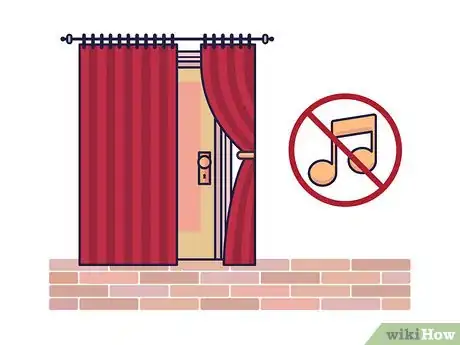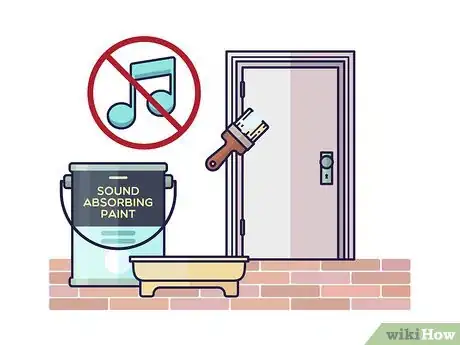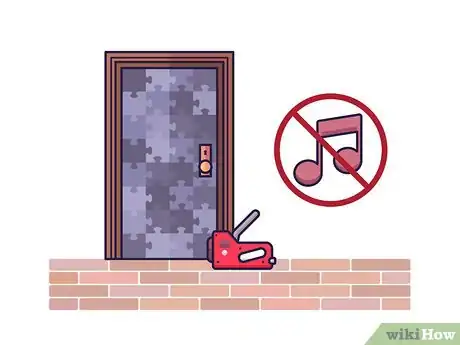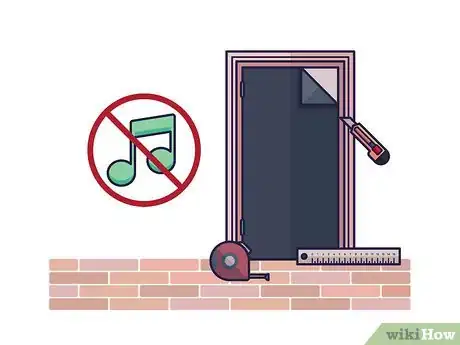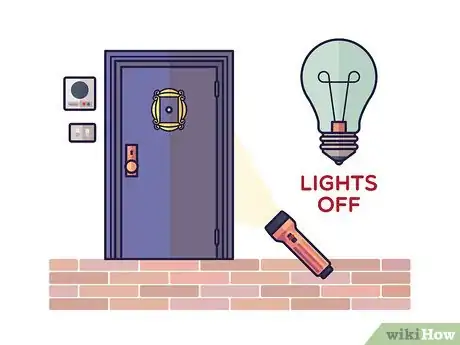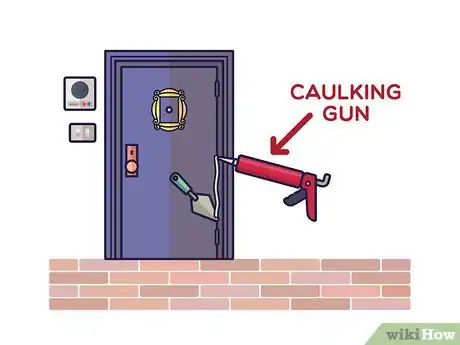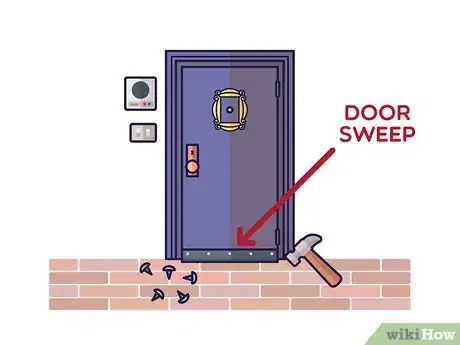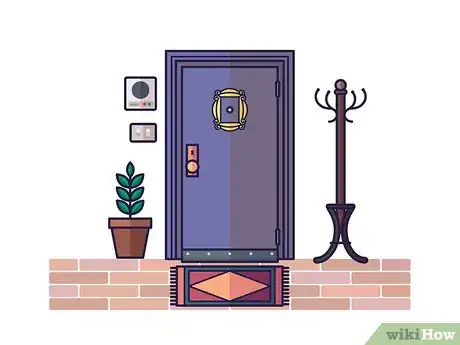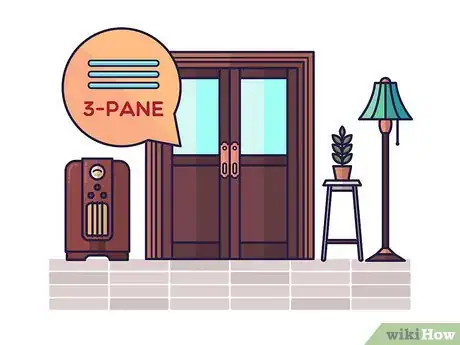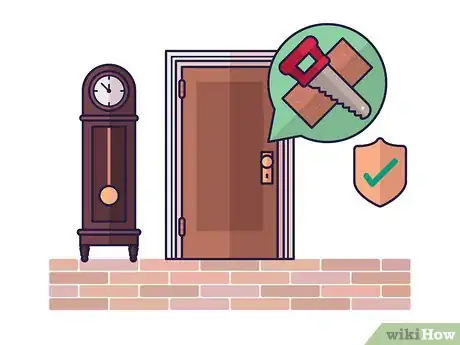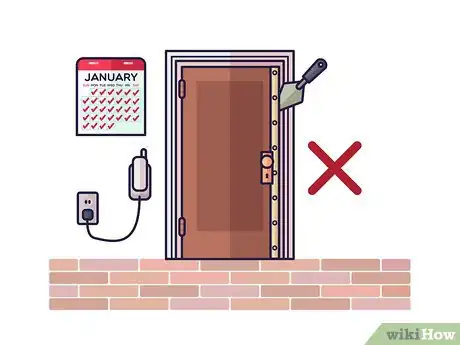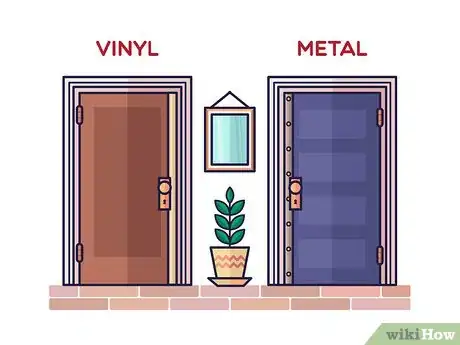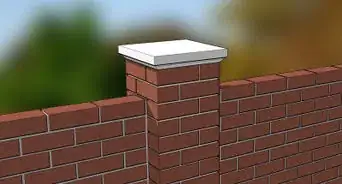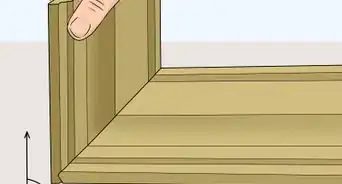This article was co-authored by Andrew Peters. Andrew Peters is an Architecture and Construction Specialist and a Principal at Peters Design-Build, a full service architecture and construction firm in the San Francisco Bay Area. With over 20 years of experience, Andrew specializes in sustainable and holistic design and building practices. Andrew holds a Bachelor of Architecture and a Project Management Professional (PMP) certification and is a Leadership in Energy and Environmental Design (LEED)-Accredited Professional. He served as Project Manager for the international-award-winning “Refract House,” Team California’s entry in the 2009 U.S. Department of Energy Solar Decathlon, a project featured in over 600 online and print articles.
There are 8 references cited in this article, which can be found at the bottom of the page.
This article has been viewed 190,347 times.
Your home is supposed to be a place where you can relax and unwind, so loud noises coming from outside your door can be very disruptive. Cut down on the exterior distractions by taking the time to soundproof all of your doors. You can even choose a basic solution, such as placing a rug before the door. If you are concerned about an exterior door, replacing all of the weatherstripping is another great option. Keep trying out solutions until you find the one that works for you.
Steps
Altering the Surface of the Door
-
1Place acoustic drapes over the door. Install a short curtain rod directly over the back of your door. Get a heavy fabric drape and hang it from the rod. You can purchase drapes that are made out of sound dampening fabric. When you are inside the room, simply slide the drape into place for less sound from outside.[1]
- This is an especially good option for renters, who may be unable to seriously alter the surface of the door or its hardware.
- Test opening and closing the door multiple time after installing the drapes to see if they affect how the door functions. Try opening the door quickly to see how the drapes affect the door if there were an emergency and you needed to leave.
-
2Coat it with sound-absorbing paint. Go to your local hardware store and ask about their sound-absorbing interior paint options. Choose one that closely matches the color of your existing doors. Follow the directions on the container to apply it. It will go only very similar to a standard paint, but may seem a bit thicker.[2]
- A coating of sound-absorbing paint can reduce external noise by almost 30 percent. The paint will also keep noises from inside the room from travelling outside as well.
- Remove the door from its hinges and paint it outside to apply several coats.
Advertisement -
3Install foam tiles. Purchase acoustical interlocking tiles at your local hardware or music supply store. Depending on the tiles, you’ll need to attach them to your door using screws, staples, or glue. Make sure that they are secure or they might fall off with the movement of the door. Acoustical tiles come in different noise-reduction levels, so choose the highest one for the most sound protection.
- Another option is to purchase and attach rubber flooring tiles on to the back of your door. They may be easier to find, but they will not offer effective noise reduction.
- If you live in a rental property, use adhesive velcro pads on the back of the foam tiles and on the wall.
-
4Hang a mass loaded vinyl (MLV) barrier. This is a thick roll of vinyl that is sold by music or acoustics shops. Measure your door and then use a utility knife to cut the vinyl down to size. Attach the vinyl to the door using a construction adhesive, which you can purchase at your local hardware store. Wait until the adhesive is dry and your door will be soundproofed.[3]
- MLV is excellent at sound reduction, but it comes at a price. You’ll likely spend at least $2 per square foot on low-quality MLV. The cost increases for thicker barriers.
- MLV can be purchased in thicknesses from 1/16 to ¼ inch (1.5 to 6.3 mm). The thicker rolls are more expensive and heavier to hang on doors. However, they provide the best protection.
Correcting Any Partial Door Gaps
-
1Check for gaps with a flashlight. Turn off all of the lights in both rooms surrounding the door. Ask a friend to stand on the other side of the door as you close it. Have them shine a flashlight around the edges of the door and over its surface. Make note of where you notice lots of light coming through, as this is also where the sound can travel.[4]
- Don’t expect that you’ll be able to block out all of the light or fill every gap on the door. Instead, target a few spots and see how that improves the soundproofing.
-
2Caulk up any gaps. Get a caulking gun and fill it with a fresh tube of wood caulk. Go around the doorframe looking for any small cracks or holes. When you see one, place the tip of the caulk tube against it and squeeze out a bead into it. Wipe off any excess with a putty knife. The caulk will help to absorb the sound and keep it from passing through the door.[5]
- Use clear silicone around any glass on your door. This will help reduce noise and prevent cold air from coming in.
-
3Install a door sweep. Check to see if the sweep between your door and the floor is sturdy and covers the entire space. You want a sweep that isn’t cracked. It should just lightly brush against the floor as the door opens and shuts. To replace a sweep, remove the old one. Then, install a new rubber one by simply screwing it into the bottom of the door frame.[6]
- Another option is an automatic door bottom. This device drops down as the door closes and lifts up as it opens. It uses a spring for these movements, so many people hire a professional for installation.
-
4Place a rug in the entryway. If the door opens onto a tile or wood floor, then the sound is likely bouncing off this space and travelling into the room. Limit this by putting a rug down over the entryway area. The fabric will help to dampen and absorb the sound coming from under the door.[7]
-
5Replace glass with triple-panes. Glass is notorious for transmitting noises from one space into another. If your door has large glass inserts, they are likely not rated for sound protection. To minimize the noise, contact a glass professional and have them replaced with thick, triple-pane glass.[8]
- Be aware that triple-pane glass may not provide the same level of visibility outside. Ask your installer about how the glass will look within your door before agreeing to anything.
-
6Hang only solid-core doors. Most interior doors are made of light woods or particleboard. They are usually partially or entirely hollow on the inside. This means that they transmit sound very easily. If you are interested in soundproofing, it’s worth it to invest in solid-core or solid wood doors.[9]
- Adding mass is the easiest way to soundproof a space. For instance, a material like concrete is far more soundproof than a thin layer of plywood or wall paneling.[10]
Applying Weatherstripping Around the Door
-
1Remove any old stripping. You’ll find weatherstripping on most exterior doors where the door meets the frame. The weatherstripping may surround the entire frame or just part of it. Use a putty knife to peel up old adhesive vinyl weatherstripping. Metal weatherstripping will usually require that you unscrew the pieces before pulling them away from the door.
- Before you get rid of any old weatherstripping, make sure that you have plans to replace it. Without weatherstripping, an exterior door can let not only noises, but also debris, into your home.
-
2Choose new metal or vinyl stripping. As a general rule, metal stripping is more expensive, but it can last upwards of 30 years on your door. It also takes more effort to install. In contrast, vinyl stripping is cheaper and often comes with an adhesive strip on the back for easy installation.[11]
- Weatherstripping usually comes in a variety of colors, so you can match it to your doorframe.
- You can also use compression stripping for an effective way to soundproof your door.
-
3Install the new stripping. Read the instructions that come with the weatherstripping very carefully. Measure the doorframe beforehand. Cut out the weatherstripping into pieces of the appropriate length. Place the new stripping up against the wood and attach it using either the adhesive on the back or small screws or nails. Make sure to keep the stripping flat against the wood as you install it.[12]
- You can cut vinyl stripping using a utility knife. You’ll need tin snips to sever metal stripping.
- Metal stripping will often have pre-cut holes showing you where to either screw it or nail it into the wood frame of the door.
-
4Test the stripping for fit. Once you’ve installed your weatherstripping, close the door fully to see if you feel any resistance. The door should shut smoothly and completely. If you notice any problems, reopen the door. Inspect the stripping to see where it might seem a bit smudged or scratched. Take a closer look at those damaged areas to make sure that they are flush against the frame.
Community Q&A
-
QuestionI rent and can't even install a curtain rod, let alone do everything else here (we have thick carpet, so no need for a rug). Are there any other options?
 T. ChinsenTop AnswererPurchase a portable clothes rack as a starting point. It will not be as tall as a door, so an extension needs to be added. Follow the recommendations for creating a soundproof layer and attach it to the rack. This will help you avoid connecting materials to the walls or door.
T. ChinsenTop AnswererPurchase a portable clothes rack as a starting point. It will not be as tall as a door, so an extension needs to be added. Follow the recommendations for creating a soundproof layer and attach it to the rack. This will help you avoid connecting materials to the walls or door.
Warnings
- If you are renting, make sure to run any permanent changes by your landlord before moving forward. This can save you a huge headache in the long run.[14]⧼thumbs_response⧽
References
- ↑ https://removeandreplace.com/2013/12/13/how-to-soundproof-a-door/
- ↑ http://www.elledecor.com/design-decorate/trends/g2926/soundproofing-a-room/
- ↑ https://www.bobvila.com/articles/how-to-soundproof-a-door/#.WbmZE8jfrIU
- ↑ http://blog.sonicbids.com/how-to-soundproof-your-home-studio-or-rehearsal-space-like-a-pro
- ↑ https://www.bobvila.com/articles/how-to-soundproof-a-door/#.WbmZE8jfrIU
- ↑ https://www.hunker.com/13418656/how-to-sound-proof-a-door
- ↑ https://removeandreplace.com/2013/12/13/how-to-soundproof-a-door/
- ↑ http://www.elledecor.com/design-decorate/trends/g2926/soundproofing-a-room/
- ↑ https://www.bobvila.com/articles/how-to-soundproof-a-door/#.WbmZE8jfrIU
- ↑ Andrew Peters. Architecture & Construction Specialist. Expert Interview. 1 December 2020.
- ↑ http://www.apartmenttherapy.com/soundproof-your-rental-bedroom-in-under-10-minutes-for-40-apartment-therapy-reader-submissions-212148
- ↑ https://www.bobvila.com/articles/how-to-soundproof-a-door/#.WbmZE8jfrIU
- ↑ http://www.apartmenttherapy.com/soundproof-your-rental-bedroom-in-under-10-minutes-for-40-apartment-therapy-reader-submissions-212148
- ↑ https://www.brickunderground.com/blog/2015/08/ask_an_expert_soundproofing_a_rental
About This Article
To soundproof a door, install a door sweep to block sound from coming through the gap under the door. Cover the door itself with acoustic foam tiles, sound-dampening drapes, or mass loaded vinyl to block out sound. You can also paint the door with sound-absorbing paint to reduce how much noise comes through. If there are any cracks or holes around the door jamb, casing, or trim, seal them with caulk so noises can’t slip through them. Another option is to install rubber weatherstripping around the door frame. It will create a tight seal between the door and the frame that keeps sound out of your room. To learn how to correct any partial door gaps that could be leaking sound, keep reading!
